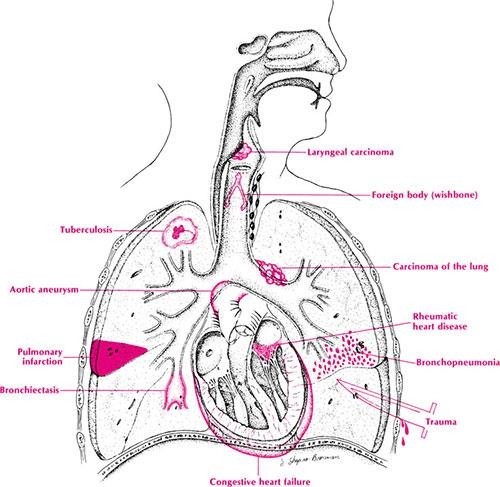After reviewing the morning laboratory findings for four clients, which client should the nurse follow up with first? Reference Range:
International Normalized Ratio [0.8 to 1.1]
Blood Glucose 74 to 106 mg/dL (4.1 to 5.9 mmol/L)]
Potassium [3.5 to 5 mEq/L (3.5 to 5 mmol/L)]
Brain Natriuretic Peptide (BNP) [less than 100 pg/mL (less than 100 ng/L)]
The brain natriuretic peptide (BNP) assay for a client with shortness of breath after a myocardial infarction (MI) increases to 1000 pg/mL (1000 ng/L).
The international normalized ratio (INR) for a client who is receiving warfarin therapy increases to 2.5.
The serum glucose level for a client receiving corticosteroids increases to 150 mg/dL (8.3 mmol/L).
The potassium level for a client scheduled for renal dialysis increases to 5 mEq/L(5 mmol/L).
The Correct Answer is A
Choice A Reason: This client has a very high BNP level, which indicates severe heart failure and fluid overload. The nurse should follow up with this client first, as they may need urgent interventions such as oxygen therapy, diuretics, and vasodilators.
Choice B Reason: This client has an INR within the therapeutic range for warfarin therapy, which is usually between 2 and 3. The nurse should monitor this client for signs of bleeding or clotting, but they do not require immediate follow-up.
Choice C Reason: This client has a mildly elevated glucose level, which may be caused by the corticosteroids that
increase blood sugar. The nurse should check the client's blood glucose regularly and administer insulin as ordered, but they do not require immediate follow-up.
Choice D Reason: This client has a normal potassium level, which is within the reference range of 3.5 to 5 mEq/L. The nurse should ensure that the client is ready for dialysis and avoid foods high in potassium, but they do not require immediate follow-up.
Nursing Test Bank
Naxlex Comprehensive Predictor Exams
Related Questions
Correct Answer is B
Explanation
A) This intervention is not appropriate because it violates the client's privacy and confidentiality. The health department does not need to be notified of the client's condition, as breast cancer is not a communicable disease or a public health threat. The nurse should respect the client's wishes and only share information with authorized persons or agencies.
B) This intervention is appropriate because it respects the client's autonomy and encourages informed decision-making. The nurse should advise the client to consider the benefits and risks of disclosing or withholding the diagnosis from the family, and how it may affect their relationships and support systems. The nurse should also provide relevant information and resources to help the client make an informed choice.
C) This intervention is not appropriate because it contradicts the client's decision and may cause confusion or distress for the family. The nurse should not suggest genetic screening to the family without the client's consent, as this may imply that they are at risk of developing breast cancer or other genetic disorders. The nurse should also avoid giving unsolicited advice or opinions that may interfere with the client's autonomy.
D) This intervention is not appropriate because it imposes the nurse's values and beliefs on the client. The nurse should not explain that the family has a right to know of potential health problems, as this may imply that the client is wrong or selfish for withholding the diagnosis. The nurse should acknowledge and respect the client's perspective and preferences, and support them in coping with their condition.

Correct Answer is D
Explanation
Choice A Reason: A client with multisystem failure secondary to a motor vehicle collision is not an appropriate assignment for the new graduate nurse. This client has complex and unstable needs that require advanced assessment, intervention, and evaluation skills. The nurse should assign this client to a nurse with 10 years experience, who has more expertise and confidence in managing critically ill clients.
Choice B Reason: A client in end-stage liver failure who is experiencing esophageal bleeding is not an appropriate assignment for the new graduate nurse. This client has a high risk of complications such as hemorrhage, infection, hepatic encephalopathy, and hepatic coma. The nurse should assign this client to a nurse with 5 years experience, who has more knowledge and skill in providing palliative care and managing bleeding disorders.
Choice C Reason: A client with Adult Respiratory Distress Syndrome who is on a ventilator is not an appropriate assignment for the new graduate nurse. This client has a life-threatening condition that requires close monitoring of respiratory status, oxygenation, and hemodynamics. The nurse should assign this client to a nurse with 10 years of experience, who has more competence and proficiency in caring for ventilated clients and interpreting data from invasive devices.
Choice D Reason: A client with chest tubes secondary to a stab wound to the chest is an appropriate assignment for the new graduate nurse. This client has a relatively stable condition that requires routine care of chest tubes, pain management, and wound healing. The nurse should assign this client to the new graduate nurse, who has learned the basic principles and techniques of chest tube management during the refresher course and the internship. The charge nurse should also provide supervision and support to the new graduate nurse as needed.
Whether you are a student looking to ace your exams or a practicing nurse seeking to enhance your expertise , our nursing education contents will empower you with the confidence and competence to make a difference in the lives of patients and become a respected leader in the healthcare field.
Visit Naxlex, invest in your future and unlock endless possibilities with our unparalleled nursing education contents today
Report Wrong Answer on the Current Question
Do you disagree with the answer? If yes, what is your expected answer? Explain.
Kindly be descriptive with the issue you are facing.
